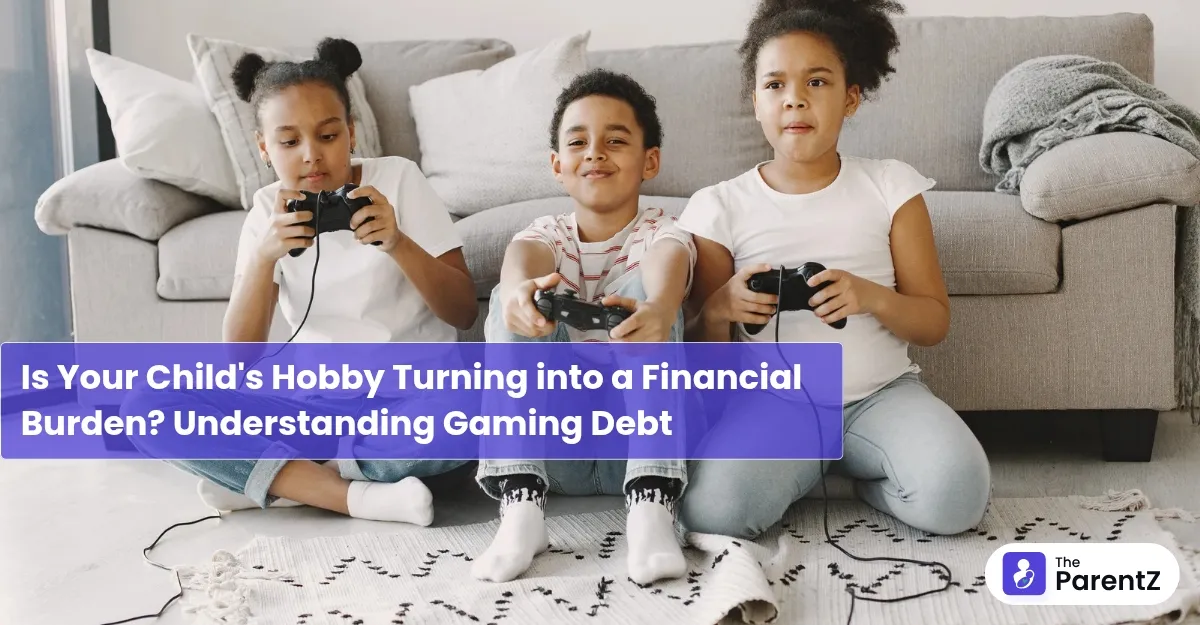Imagine waking up one day to find that your bank account has been drained—thousands of rupees gone, not because of fraud by strangers, but because of your own child’s gaming habits. It sounds like a nightmare, doesn’t it? Yet, for many households, this is becoming an all-too-common reality. Gaming debt is no longer a rare phenomenon; it’s a growing issue that’s silently creeping into households and leaving parents financially and emotionally devastated.
If you’re a parent worried about your child’s gaming habits or if you’ve already faced the consequences of unchecked in-game spending, this blog is for you. And if you’re a young gamer reading this, it’s time to understand the gravity of what might seem like “just a game.”
The Rise of Gaming Debt: A Silent Threat
Gaming has evolved far beyond the simple joy of playing. Today’s games are immersive, competitive, and often designed with one goal in mind: to keep players hooked—and spending. Features like loot boxes, skins, virtual currencies, and in-app purchases have turned gaming into a multi-billion-dollar industry. While these features might seem harmless on the surface, they come with hidden traps that can lead to financial ruin.
Take the case of a 16-year-old boy from Hyderabad who spent over ₹36 lakhs on mobile games using his mother’s and grandfather’s bank accounts. What started as small transactions—₹1,500 here, ₹10,000 there—quickly escalated into massive amounts as he got addicted to the game and its promises of rewards. By the time his family realized what was happening, it was too late.
This isn’t an isolated incident. Stories like these are becoming alarmingly frequent, and they highlight how gaming debt doesn’t happen overnight—it builds slowly but surely.
How Does Gaming Debt Happen?
Gaming debt is rarely the result of one big mistake. Instead, it’s the outcome of a series of small decisions influenced by clever game design and psychological tactics. Here’s how it happens:
- The Illusion of “Free-to-Play”: Many games lure players in with the promise of being free to play. But once you’re hooked, they introduce microtransactions—small payments for extra lives, better weapons, or exclusive skins. These purchases feel insignificant at first but can quickly add up.
- Gambling Mechanics: Features like loot boxes mimic gambling by offering random rewards in exchange for money. The thrill of potentially winning something rare keeps kids coming back for more.
- Social Pressure: Kids often feel pressured to spend money in games to keep up with friends or avoid being left out. A rare skin or powerful weapon becomes more than just an item—it’s a status symbol.
- Stored Payment Details: Many parents unknowingly save their credit card details on gaming platforms. This makes it dangerously easy for kids to make purchases without realizing the real-world cost.
- Lack of Financial Awareness: Virtual currencies like “V-Bucks” or “Robux” make it harder for kids to understand how much they’re actually spending. To them, it feels like playing with Monopoly money—but the consequences are very real.
The Emotional and Financial Toll on Families
For parents, discovering that their child has racked up gaming debt is devastating. It’s not just about the money—it’s about trust and communication within the family. Many parents feel guilty for not monitoring their children’s activities more closely or for giving them access to devices in the first place.
For children, the realization that their actions have caused financial harm often leads to feelings of shame and anxiety. In some extreme cases, kids have even resorted to drastic measures out of fear or guilt—like the tragic story of a teenager who attempted suicide after his father discovered unauthorized gaming transactions.
Why Kids Need to Understand the Consequences?
Children often see gaming as harmless fun and don’t realize the financial impact their hobby can have on their families. They must understand:
- Money Is Real: Virtual currencies represent actual money from your bank account.
- Debt Hurts Everyone: Excessive spending can strain family finances and cause emotional stress.
- Gaming Should Be Controlled: Spending limits and thoughtful decisions are essential for responsible gaming.
What Can Parents Do?
If you’re worried about your child falling into the trap of gaming debt—or if you’re already dealing with it—here are some steps you can take:
1. Have an Honest Conversation
Sit down with your child and talk openly about money and its value. Explain how virtual purchases translate into real-world expenses and why it’s important to be cautious.
2. Set Up Parental Controls
Enable purchase confirmations on platforms like Google Play or Apple App Store to prevent unauthorized transactions. Use features like "Ask to Buy" on Apple devices or guest mode on Android phones.
3. Monitor Spending
Keep an eye on receipts for in-game purchases and set up transaction notifications through your banking app for early detection of unusual activity.
4. Limit Access
Use child accounts with restricted permissions for gaming platforms. For younger kids, consider apps specifically designed for children, such as YouTube Kids, instead of regular YouTube.
5. Teach Financial Responsibility
If your child is old enough, give them a prepaid debit card with a limited balance for small purchases. This teaches them to budget while keeping spending under control.
6. Encourage Alternative Hobbies
Help your child explore other interests outside of gaming—like sports, art, or reading—to reduce screen time and potential exposure to in-game spending traps.
7. Be Proactive About Social Pressures
Discuss peer influence and help your child build confidence in saying no when they feel pressured to spend money unnecessarily.
A Message for Young Gamers
If you’re a gamer reading this, know that your actions have consequences—not just for you but for your family as well. It might feel tempting to buy that cool skin or open just one more loot box, but ask yourself: Is it worth risking your family’s finances? Gaming should be fun—not something that causes stress or guilt.
Remember: You have the capability to make responsible choices.
Conclusion
Gaming debt isn’t just about money—it’s about understanding how easily we can be manipulated by clever marketing and psychological tactics. As parents and gamers alike, we need to stay informed and vigilant.
If this blog resonated with you—whether as a worried parent or a gamer who feels trapped—know that you’re not alone. The first step toward solving any problem is acknowledging it exists. Together, we can ensure that gaming remains what it was always meant to be: an enjoyable escape from reality—not a financial burden that weighs us down.
Let this be a wake-up call—for all of us—to take control before it’s too late.








Be the first one to comment on this story.